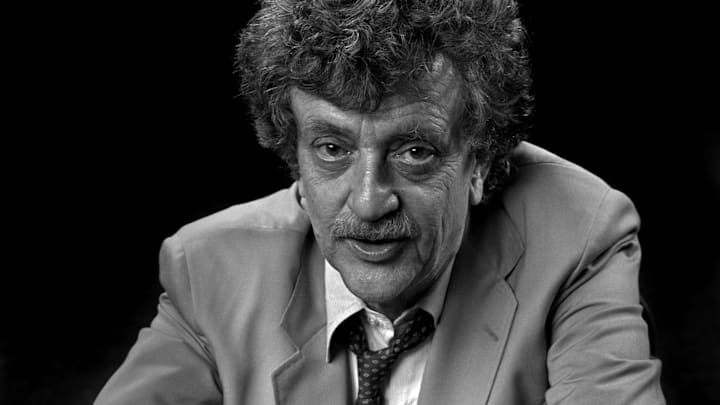Kurt Vonnegut was one of the most influential American writers of the 20th century. All signs point to the author holding the same place in the 21st century, despite the fact that he died April 11, 2007. The late Vonnegut has accomplished more dead than most of us will alive, from social media celebrity to indie film success. We’d expect nothing less from the ironic author who wrote in Slaughterhouse Five, “How nice—to feel nothing, and still get full credit for being alive.”
1. RT @Kurt_Vonnegut
Vonnegut's a Twitter star. The @Kurt_Vonnegut Twitter account (not verified, natch) tweets the late writer’s quotes and has more than 220,000 followers. Meanwhile, he only follows @TheMarkTwain. (The two writers probably would have followed each other in real life, if they’d had the chance. Their work is frequently compared. Vonnegut called Twain an “American saint” and even named his first son after him.)
2. Check Out the Vonnegut Library
Vonnegut said, “The America I love still exists at the front desks of our public libraries.” In fall 2010, his hometown of Indianapolis opened the Vonnegut Memorial Library in his honor. The building is part library, part museum and showcases a replica of Vonnegut’s writing studio and some of those famous rejection letters he talked about. Guests can type messages on the late writer’s typewriter, which are then tweeted from the Twitter account @kurtstypewriter.
3. Posthumous Publications
Published in 2013, We Are What We Pretend To Be: The First and Last Works contains one of Vonnegut’s first novellas and the establishing chapters of his last novel. Other collections have been published since his death, including a collection of short stories, drawings, and essays called Armageddon in Retrospect in 2008; the unpublished short story collections Look at the Birdie in 2009; and While Mortals Sleep in 2011. Vonnegut’s writings from his college newspaper days were published in the Amazon eBook, Kurt Vonnegut: The Cornell Sun Years 1941–1943. A previously unpublished short story, “The Drone King,” was discovered and published in 2017.
4. Digital Luddite
Before the release of Look at the Birdie, some of Vonnegut’s unpublished short stories were made available as e-books. Now you can access all of his work via e-reader. Vonnegut was a proud Luddite who wrote in longhand and used a typewriter long after most writers switched over to a computer. We wonder if the book-loving technology critic would have found the digitalization of his work—and books, in general—ominous, or a good use of “damn fool computers.”
5. The Third Adaptation’s a Charm
Vonnegut's 1961 short story “Harrison Bergeron” is set in 2081 when all Americans are forced to be equal in not only rights, but also abilities. No one’s smarter, richer, or more prolific than anyone else. The dystopic work has been adapted for the screen three times. Vonnegut praised the short film version Harrison Bergeron released a year before his death. He might have liked the latest reworking even better: the 2009 short film 2081 is the closest adaptation of “Harrison Bergeron” yet. The sci-fi film runs 25 minutes and cost only $100,000 to produce, yet it’s one of IMDB’s most popular short films.
